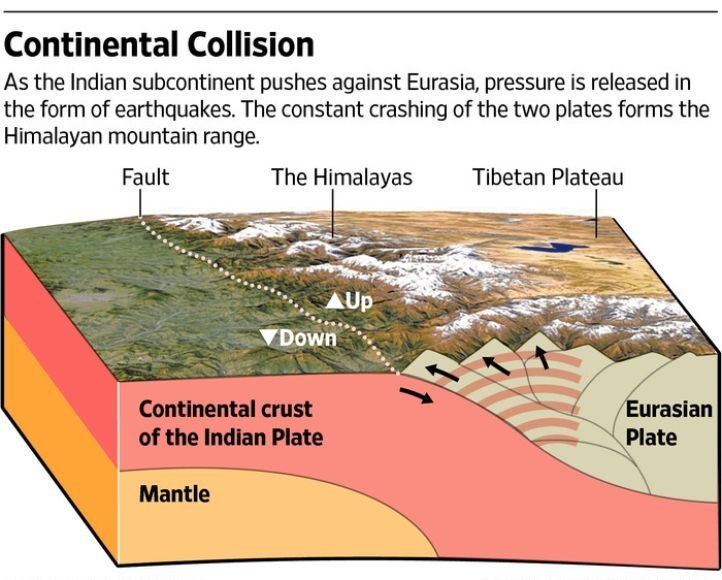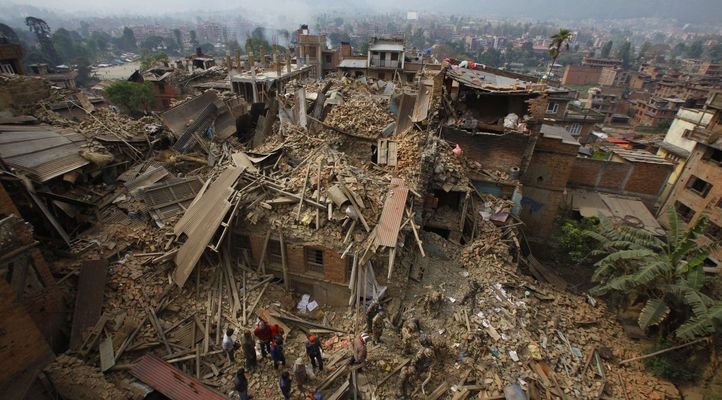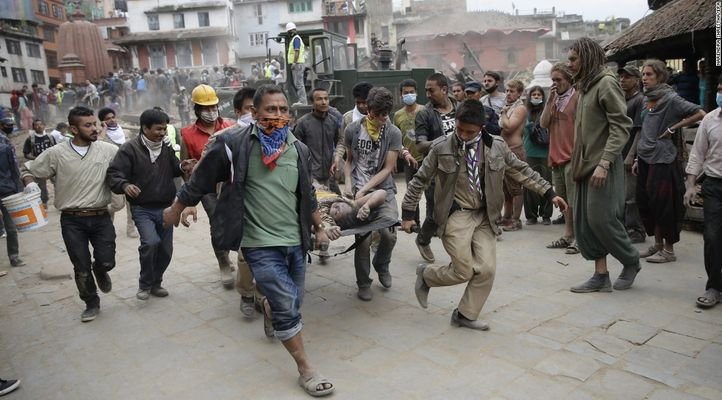On Saturday, April 25 a devastating earthquake hit Nepal. It has taken the lives of 3,726 people and injured 6,538 individuals, as of Monday 5pm, not to mention the irreversible damage done to the country’s infrastructure. Hundreds of buildings have crumbled with the force of the quake. Durbar Square, a UNESCO world heritage site has been reduced to rubble. The famous Dharahara Tower has been toppled to leave just a stump.
Nepal is used to quakes – it is one of the most seismically active regions in the world. You only have to look to the Himalayas for proof.

Nepal sits on a very precarious fault line – a fault is like a board, upon which a spring is stuck. It is a rough surface under the surface of the Earth. A fault line is the the point where the fault and ground surface meet.
The most visible result of this is the Himalayan mountain range. The fault line runs along the 1400 mile long mountain range. The constant collision of the India and Eurasia tectonic plates pushes up the height of the peaks by about a centimetre a year.
Every 75 years
The latest earthquake was the worst one Nepal has experienced in 81 years . According to the National Society for Earthquake Technology, this region experiences a magnitude 8 quake approximately every 75 years.
The reason for this is the regular movement of the fault line that runs along Nepal’s southern border, where the India plate collided with the Eurasia plate 40 to 50 million years ago.

“The so-called India plate is pushing its way north toward Asia at a rate of about 5 centimetres, or 2 inches, a year” said Lung S Chan a geophysicist of the University of Hong Kong. Geologically speaking, that is extremely fast.
As the plates push against each other, friction generates stress and energy that builds until the earth ruptures. In the case of Saturday’s quake the plate jumped about 2 meters forward.
The Saturday quake was also relatively shallow, it took place only about 10-15km below the Earth’s surface. According to the US Geological Survey, such quakes tend to cause more damage and more aftershocks than those that occur deeper down.
A boiling pot of water
“Earthquakes dissipate energy, like lifting the lid off a pot of boiling water,” said Dr. Chan. “But it builds back up after you put the lid back on.”
Despite the seeming regularity of earthquakes in Nepal, it is not possible to predict when one will occur. The Earth’s tectonic plates are consistently moving. Some faults relieve the energy through earthquakes, others do so quietly.
” Some areas, like Nepal, release energy as a large earthquake, once in a while,” said Dr. Chan. “These regions all have different natures for reasons geologists don’t really know.”

Initial estimates of casualties of an earthquake like this will tend to be low, however, they will continue to build as more information comes in. In this case, the final number is estimated to be quite high, not only because of the magnitude of the quake, but also the results of the aftershocks. Most were recorded as fours and fives, however, one reached 6.7 on the richter scale.
The aftershocks can have a major effect on infrastructure. A building that has been damaged by the quake can be brought to rubble from the aftershock. The assessment in Nepal is that much of the population live in houses that are highly vulnerable to earthquake shaking. They are usually made of un-reinforced brick and the like.
This quake comes at a delicate time for Nepal. It has recently emerged from a long-running civil war and its economy has been improving steadily. It is currently one of the poorest countries in the world, with a per capita income of $1,350 . It is no wonder then that most people live in buildings which are unable to withstand the strength of such a strong quake. At this time, one can only hope that Nepal is getting all the help it can.

















